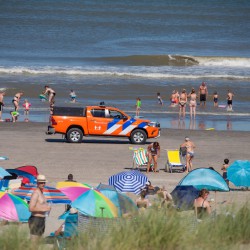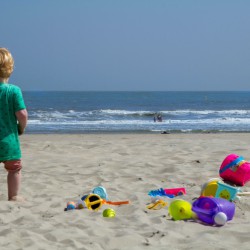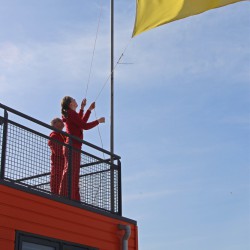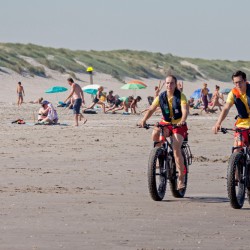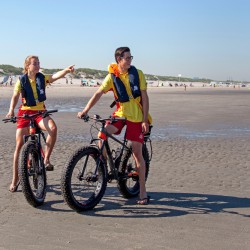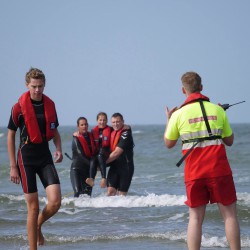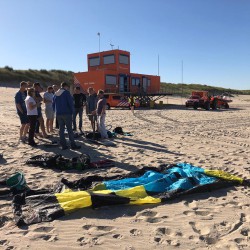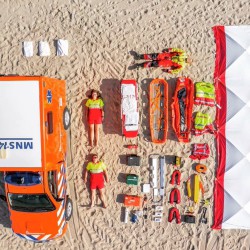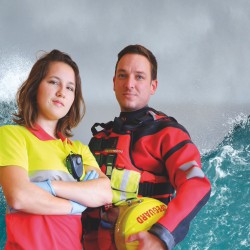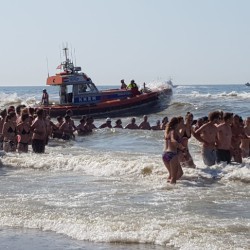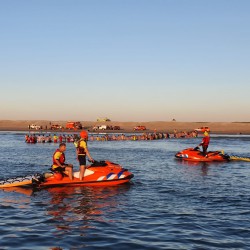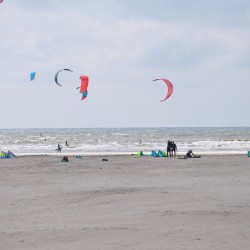Rip currents
Spot, avoid and escape
Remember that the sea is always moving. Know the dangers of the sea, and what to do if you get caught in a rip current.
There are several rows of sandbanks off the Westland coast, with channels at right angles to the coast between them. These are called rip current channels, and water flows to and from the coast through them.
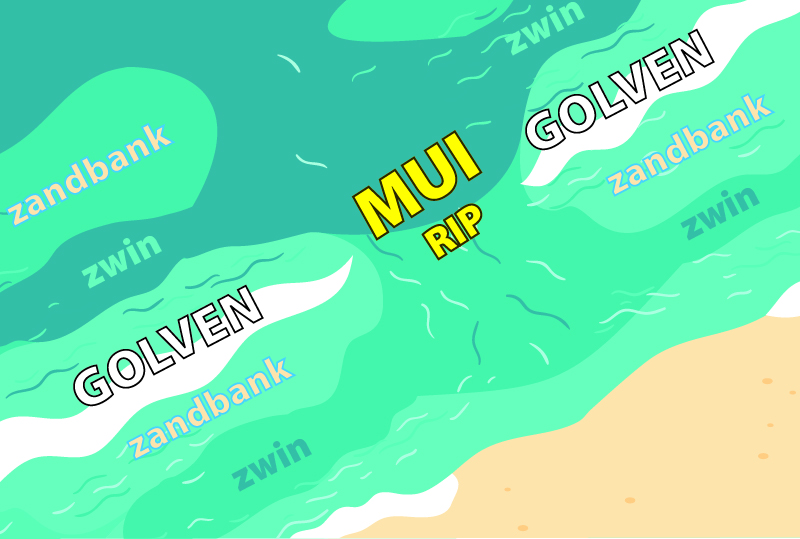
What do you need to know?
- The area where no waves break is where rip currents occur, because there is no sandbank to create waves.
- DO NOT swim against the current, it will just waste energy that you need to save yourself.
- Rip currents are only a few dozen metres wide. There are sandbanks to the left and right of them, with no current.
- The rip current disappears behind the rows of sandbanks.
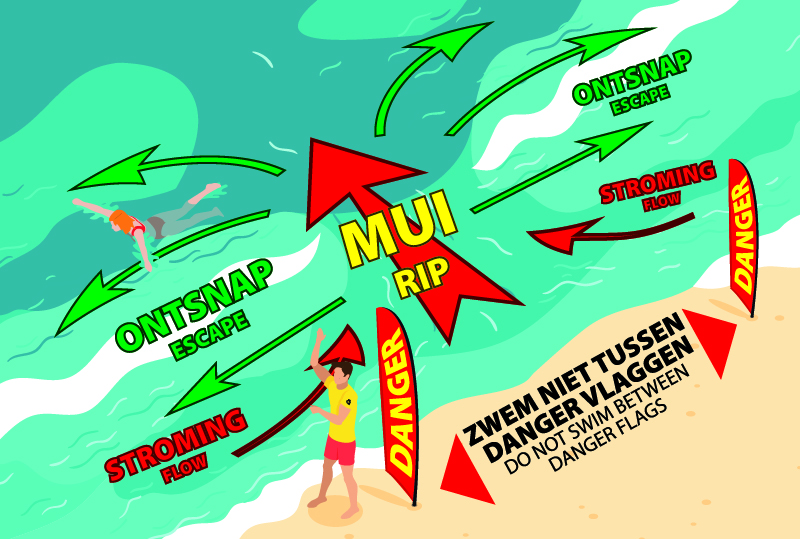
Lifeguards sometimes mark very dangerous rip currents with red beach flags with DANGER written in yellow on them. Never swim in an area marked with these DANGER flags!
What should you do if you find yourself in a rip current?
- Don’t panic!
- Swim with the current; allow yourself to be swept from the shore.
- As soon as the rip current weakens, swim across it to the left or right.
- Return to the beach via the sandbanks.
- Get people's attention on the beach.
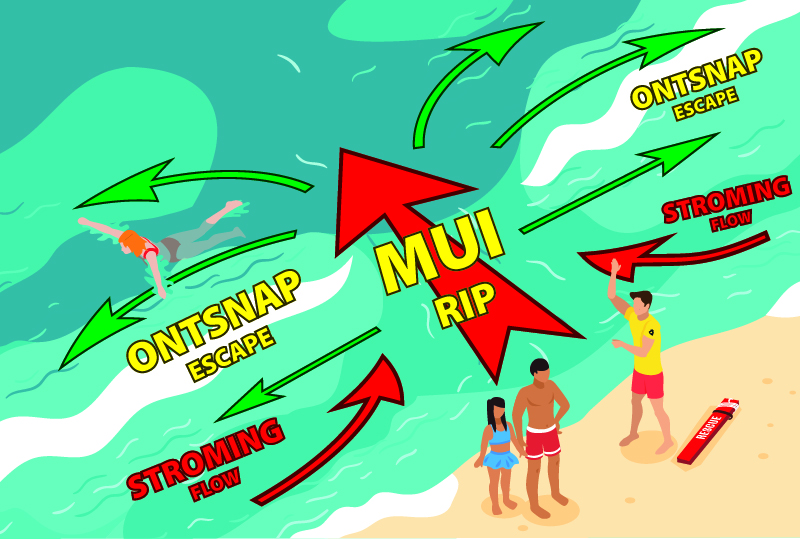
What should you do if you see someone else caught in a rip current?
- Call 112 yourself, or get someone else to call.
- Keep sight of the person struggling.
- Wait for the lifeguards/emergency services.
10 TIPS
Enjoying the beach and the water, here are some lifeguard tips!
- Please only swim on places where it is allowed and safe.
e.g. where lifeguards are on duty - Make sure you are fit and healthy enough to swim and enjoy the water sports.
And do not forget to put sun screan on! - Never swim alone.
Even the most experienced swimmer can get in trouble! (e.g. cramp) - Don’t swim near rip currents
- Alcohol and swimming do not mix!
- Don’t use floatation devices during offshore winds.
- Dig no deep holes on the beach in the sand.
Risk of collapse and suffocation. - Keep to the designated areas for practising water sport.
- Do not jump of bridges, piers or any constructions.
They are not designed for diving of jumping of in to the water. - Always keep an eye on your children,
As well as in the water as on the beach
